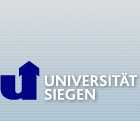
Objectives of
ECOQUEST
The objectives are innovative contributions towards novel cooling units with reduced noise radiation and decreased CO2 emissions. We aim at new compact lay outs, innovative heat management strategies and low energy/noise components. Intermediate objectives concern (i) implementation of an integrated simulation platform for noise mechanisms, scattering and propagation; (ii) development of design procedures for thermally and acoustically optimal cooling units; (iii) research on innovative fan designs and new passive noise control measures and their integration into novel cooling units. Mass produced automotive units and large locomotive systems produced at small numbers are considered simultaneously - strong synergies and cross-fertilization are expected.
The project is structured in five work packages. WP1 deals with
the project co-ordination. WP2 focuses on the acoustical models
and their integration, WP3 takes into account realistic train
and automotive environments, WP4 deals with full scale vehicle
tests and WP5 concludes the project with an assessment and an
exploitation plan and dissemination. Being an upstream-research
oriented project, a majority of the person-months and budget,
especially within WP2 and WP3, are committed to 3 universities
and a research establishment. WP4 and 5 are performed primarily
by industrial partners to enable immediate exploitation of the
results.
The overall technical objectives within ECOQUEST are innovative
contributions towards emission and energy efficient cooling
systems for ground vehicles. It is the clear intention of the
consortium to look simultaneously at two, traditionally rather
separated industrial applications, namely the mass producing
automotive and the train and heavy duty vehicle application.
The technical problems are very similar. Presently the
automotive industry seems to be a bit ahead of the train
industry concerning methodologies and solutions. Thus the idea
is to further develop procedures and solutions applicable for
all types of ground vehicles and take advantage of synergies.
Cross-fertilization is also expected from aerospace solutions,
since many partners of the consortium have been working or
presently work in this field of application as well.
The scientific objectives comprise:
- the extension and validation of both existing and innovative modelling approaches and acoustic simulation technologies in order to meet the specific needs and constraints related to the achievement of smarter and greener sustainable surface transport.
- the combination of these high-end acoustic simulation techniques with state-of-the-art thermal efficiency assessment methods, in a view to reduce jointly the acoustic and CO2 footprint of automotive, heady duty vehicles and rail transportation.
The technical objectives, backed up by the scientific
outcomes, are the multidisciplinary optimization of:
- intelligent thermal management for reduced noise emission and energy consumption altogether;
- lay-out of cooling systems (compact - non compact radiators, high-low pressure resistance radiator, one or more fans, fan on the cool or warm side of the system, low - high speed fan, radial - axial fan, etc.).
To achieve these challenging goals, intermediate objectives concern:
- the implementation of an integrated, seamless simulation platform gathering modelling tools for tonal noise, broadband noise, near-field acoustic scattering in realistic geometries and propagation towards listener in the far field;
- the development of dedicated design procedures for thermally and acoustically optimal cooling modules;
- the integration of innovative passive noise control measures at the source.
After all, the models employed and strategies developed within ECOQUEST shall be used to design two large scale new cooling units for each application, automotive and locomotive. The industrial partners will build and implement them in full scale vehicles and assess their functionality by an extensive series of measurements.
Closing actions of the project will be:
- a cost-benefit analysis, and
- the development of guidelines for the noise reduction for given installations.

